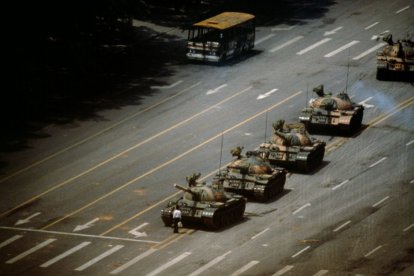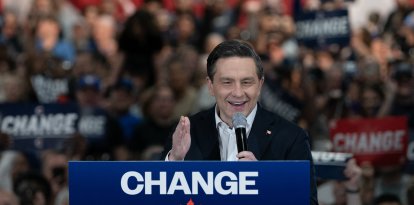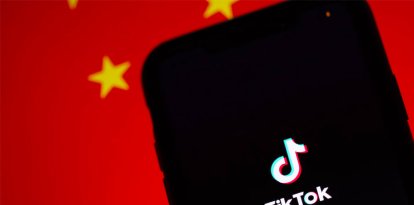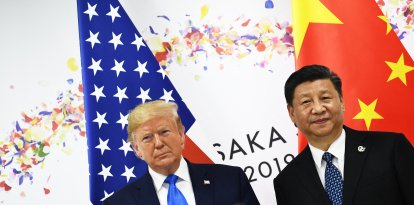June 4: 34 years since the Tiananmen Square massacre
In China, it is forbidden to commemorate the tragedy or even search for information about it online while outside the country, many cities organize events to remember those who were killed.

Icónica fotografía de un hombre frente a unos tanques tras la masacre de Tiananmen.
China promised there would be change. In the 1980s, after Mao Zedong's death, Deng Xiaoping's government promoted a series of measures that made people believe that the authoritarian regime was changing, such as allowing private companies to form and opening up to international investment. Was the Asian country becoming westernized? Were these the first steps on the road to democracy?
June 4 proved otherwise. China opened fire on its own people, gathered in a peaceful protest at the iconic Tiananmen Square in Beijing, the very heart of the country.
The protests had begun weeks before, incited by student leaders. However, it wasn't just a youth-driven movement, as history professor Jeremy Brown explains, "Millions of ordinary citizens took part and gave the protests a new momentum beyond what the students could have achieved on their own."
The reasons for the concern were as varied as the protesters. Some wanted the right to establish student organizations free from party control, others demanded freedom of the press while others voiced their concerns about the one-child policy and economic reforms. "Protesters were not asking for a Western-style democracy of one person, one vote—they were asking for a better, more open Chinese system," Brown clarifies.
The Chinese Communist Party, which had already declared martial law in May, ordered the army to invade the square where the protesters were gathering with tanks and infantry. Estimates of casualties vary. Numbers range from the 200 acknowledged by China at the time, to 1,000, which was the number most people agreed on, and even as many as 10,000, which was reported by a British diplomatic cable.
"As doctors, we often see deaths, but we’ve never seen such a tragedy like this," a Chinese doctor told American reporter Nicholas Kristof, who won the Pulitzer for his coverage of the tragedy.
The day after the dark and confusing episode, a photo was taken that can never be forgotten. It portrayed the violence perpetrated by the People's Liberation Army: a citizen, whose identity remains unknown, stood alone in front of a row of tanks. He has been known ever since as the "Tank Man."
Silence in Tiananmen
"The government has never accepted responsibility for the massacre or held any officials legally accountable for the killings," Human Rights Watch points out. It also adds:
However, the Chinese Communist Party takes it one step further. It does not even allow its citizens to remember the victims of June 4. For this purpose, it maintains "the world's most sophisticated surveillance state," as can be read in an article written by Gordon G. Chang for Voz Media.
As part of the 'preparations,' the communist government deployed anti-terrorist units in Victoria Park, Hong Kong, and took over the park by having pro-Beijing groups organize a carnival, according to local media. In Victoria Park, every June 4, thousands of citizens participate in a vigil in memory of those killed in Tiananmen Square.
Sitong Bridge, where banners with anti-government slogans were hung last year, is another iconic site removed from maps by the authorities. Internet searches of the bridge yield no results, according to The Daily Guardian, and the sign indicating its name appears to have been removed.
Any word linked to Tiananmen is strictly censored on the internet in China and on its technology 'for export,' such as TikTok. The government arrested at least four protesters the previous day.
However, beyond China's borders, victims of the dictatorship who escaped their country and members of the international community are organizing events to remember the massacre.
Taipei, New York, Berlin and Sydney are some of the cities organizing events to remember the Tiananmen Square tragedy. At the same time, Twitter users made "Tiananmen Square Massacre" and "Hong Kong" one of the trending topics of the day in the United States.
RECOMMENDATION





















